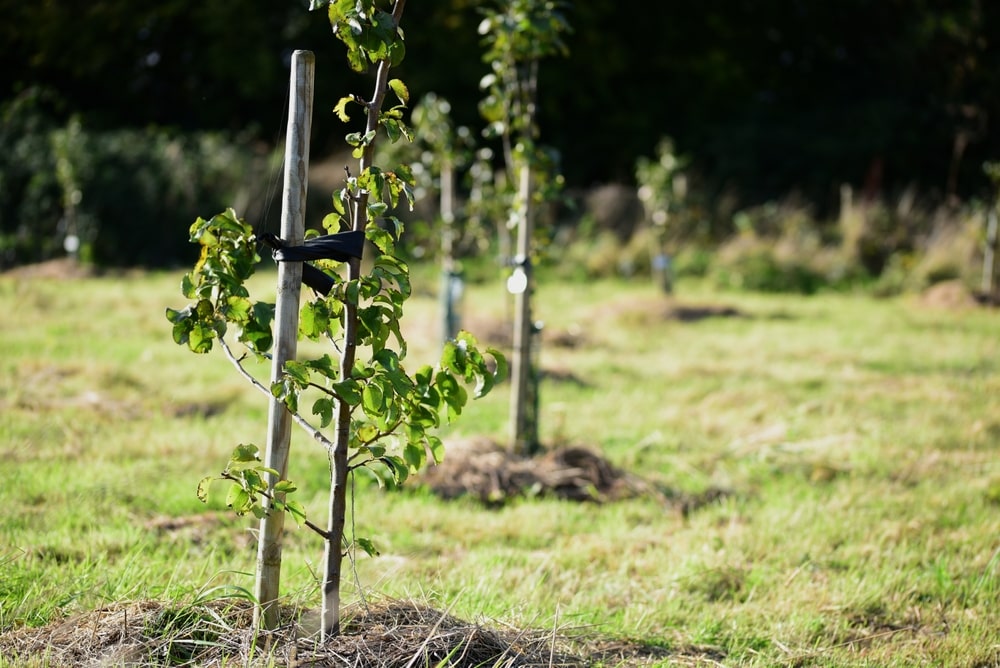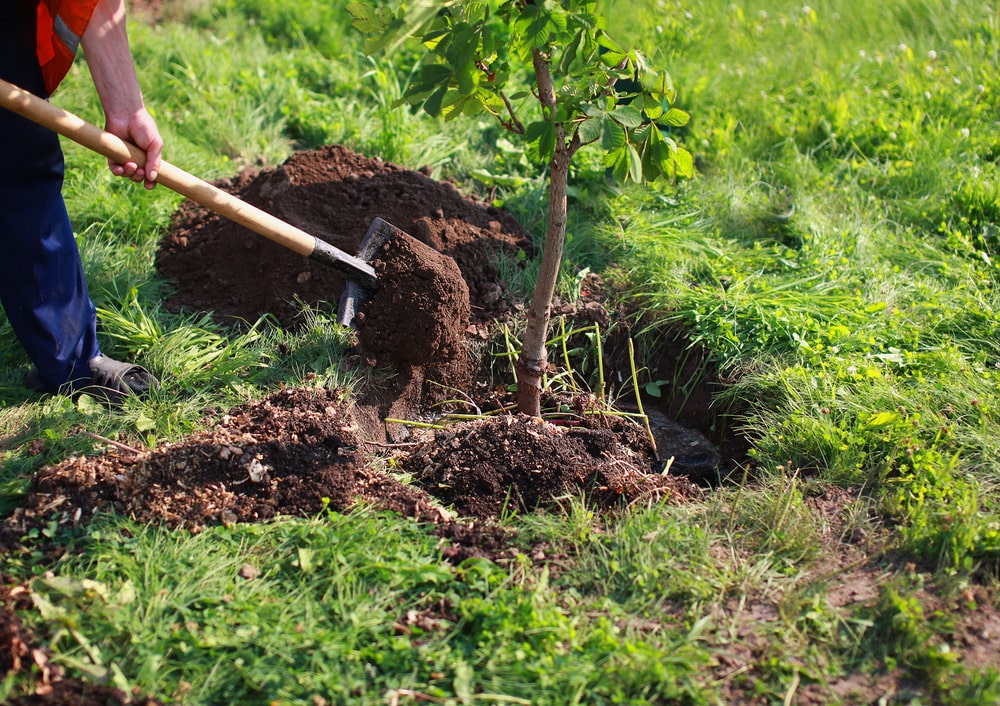How To Plant A Tree Step By Step In PA: Your Guide For Planting Success!

If you live in PA and want to try your hand at arboriculture (fancy-talk for tree growing), you’ve come to the right place. Whether it’s adding shade to your yard, increasing privacy, or creating a property border, planting a tree can do a lot for your home.
Plus, planting trees at home can have meaningful environmental, social, and health benefits. So we’re walking you through how to plant a tree step by step in PA. The first question to ask yourself is: what type of tree should I plant?
Skip Ahead:
- Choosing the Best Tree For Your Yard
- When to Plant Your Tree in PA
- Creating the Best Soil for Planting Trees
- Tree Planting Tools & Supplies
- Step-By-Step Tree Planting Guide in Pennsylvania
Choosing The Best Tree For Your Yard
Central Pennsylvania falls into climate zones 6-7 on the Hardiness Map. With the local climate in mind, here are some of the best tree varieties to plant:
- Evergreen: arborvitae, cypress, douglas fir, pine, and spruce
- Deciduous: birch, elm, linden, maple, oak, sweetgum, and weeping willow
- Flowering: azaleas, cherry, crabapple, crape myrtle, dogwood, and magnolia
When choosing a type of tree, you should also ask yourself some questions about your tree planting site and its surroundings, such as:
1. Will My Tree Have Sufficient Sunlight Or Shade?
Determine what the conditions are like in your tree planting area: sunny, partially shaded, or completely in the shade. Then, choose a tree that thrives in these conditions.
2. What Shape Is My Tree?
Consider what shape your tree will grow into: tall, skinny, short, or squat. Then determine if it will fit in aesthetically with your chosen location.
3. What’s The Height And Width Of My Mature Tree?
You want to think about how close this tree will be to your home, your neighbor’s property, and any nearby power lines. You don’t want it to encroach on any of these things.
Once you’ve picked your tree and have a spot to plant it, you’ll want to think about the time of year next.

When To Plant Your New Tree In PA
The time of year is key when planting trees. New trees need to establish roots before they’re exposed to weather extremes like high heat, low temperatures, or drought. In Pennsylvania, the prime tree planting seasons are spring and fall.
If you’re planting a tree when it’s cooler outside, more of the tree’s energy will go into establishing roots. There is also a reduced risk of root rot. Excessive heat and overwatering produce soil conditions that are ripe for fungi. In the spring and fall, you don’t have to water your trees as frequently.
Fall is a good time to plant deciduous trees like maple, oak, or elm. Because they go dormant in the fall and winter, a deciduous tree will quickly establish roots when there are no leaves to feed.
Creating The Best Soil For Planting Trees
The perfect soil to plant your tree in has a good structure, drains well, and retains moisture. It also should be full of nutrients, easy to cultivate, and easy to warm up quickly without becoming too dry.
This “ideal soil” can be hard to find. In most yards, it’s unlikely to occur naturally. Instead, these are the most common types of soil you’ll find in your yard:
- Clay: rock hard when dry, drains poorly, heavy to cultivate, and warms slowly.
- Sandy: gritty to the touch, easy to cultivate, dries out quickly, warms quickly, and may lack nutrients.
- Silty: well-drained, retains moisture, more nutrient-rich, but weak structure makes it easily compacted.
- Acidic: feels spongy, nutrient-poor, retains water, may require drainage, and warms up quickly in spring.
- Chalky: includes stone, high pH (alkaline), but may lack certain minerals.
To improve these less-than-ideal soils, add organic matter to your soil (mulch/compost). First, add compost or planting mix to your topsoil when planting your tree. Then, complete the planting process with mulch. Never dig if it’s too wet or too dry as this can damage your soil.

Tree Planting Tools & Supplies
Once you’ve picked your tree species and your planting location, and evaluated your soil, it’s time to assemble your tree planting tools. To plant a tree, you will need:
- A shovel for scooping your soil and planting mix.
- A wheelbarrow to move your mixture.
- Planting mix for healthy tree growth.
- Starter fertilizer containing mycorrhizae to give your seedlings some vital nutrients.
- Mulch to maintain moisture in your soil.
Getting Started: How To Plant A Tree Step By Step
For a healthy tree that grows for years to come, follow these tree planting instructions. Note that these instructions are for trees that are balled and wrapped in burlap:
- Dig a hole that is twice the width of the root ball and the same depth. The root ball should be slightly higher than ground level when placed in the hole.
- As you dig, transfer the soil into a wheelbarrow and combine it with a planting mix (about a 50/50 ratio). Also, add starter fertilizer into the mix (and add a little starter fertilizer in the bottom of the dug out hole). For a tree that is sold in a container, remove your plant from the container and loosen or tease the roots on the sides of the root ball. Doing this before planting enables the roots to spread out and grow in all directions.
- Place your tree in the hole and start to refill it with your soil mixture. You should add your soil mixture a little bit at a time, and tamp down with your feet.
- Before you add too much soil, remove the twine and fold the burlap down—do not remove the burlap from your tree—and continue to add your soil.
- Finally, add a layer of mulch that’s about 2 inches thick. Leave a gap around the tree’s trunk, but don’t add too much mulch—you don’t want a mulch volcano.
And that’s how to plant a tree step by step. Now it’s time to get planting!
Ready to plant? Shop our Stauffers Online Home & Garden Store for tree planting supplies and a variety of tree options.
This blog was originally published on April 12, 2023. It was updated on October 3, 2023.
